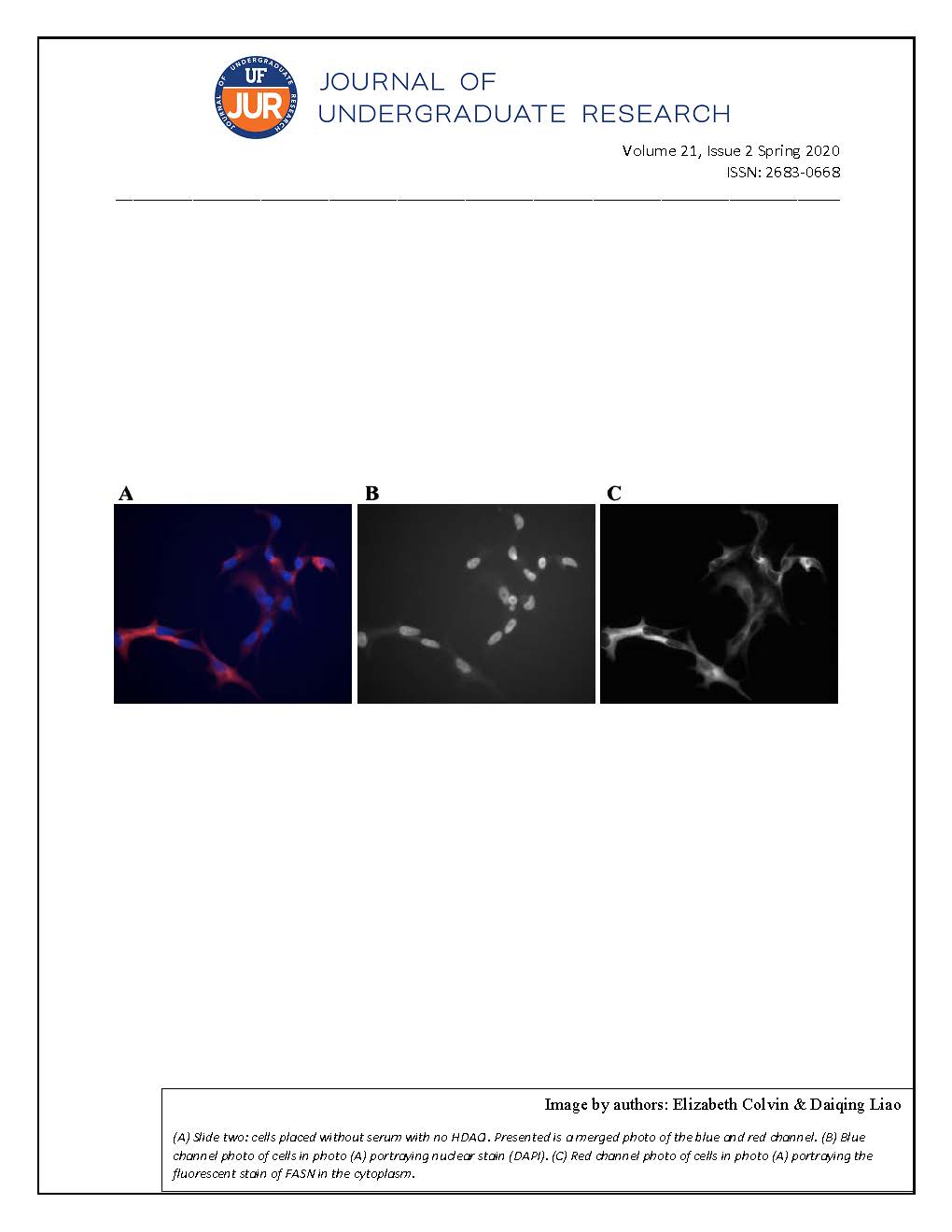DBS Artifact Removal Through Template Subtraction
DOI:
https://doi.org/10.32473/ufjur.v21i2.108861Keywords:
DBS Artifact Removal, Closed-loop DBS, Local Field Potentials (LFPs), Event Related Potentials (ERPs), Template SubtractionAbstract
Deep Brain Stimulation (DBS) typically results in the formation of large signal artifacts in electrophysiological recordings in the surrounding regions of the stimulated area. This can prove to be problematic, as it makes the study of physiological responses in Local Field Potentials (LFPs), and consequently Event Related Potentials (ERPs) quite challenging. Research has been done in attempts to attenuate the effects of these large artifacts through various ways, most commonly through blind suppression, function fitting, template subtraction, and adaptive filters. However, many of these methods have proven to only be useful within the context of surface recordings (EEGs) and not for LFPs. In our research, we utilize template subtraction and extend it to the context of LFPs, in an attempt to uncover more effectively the underlying physiological responses to DBS.
References
Sun, L. & Hinrichs, H. (2016). Moving average template subtraction to remove stimulation artefacts in EEGs and LFPs recorded during deep brain stimulation. Journal of Neuroscience Methods. 266. 10.1016/j.jneumeth.2016.03.020.
Sun, L., Hinrichs, H. (2009). Simultaneously recorded EEG/fMRI: removal of gradient artefacts by subtraction of head movement related average artefact waveforms? Hum. Brain Mapp. 30 (10), 3361–3377.
Culaclii, S., Kim, B., Lo, Y., & Liu, W. (2016). A hybrid hardware and software approach for cancelling stimulus artifacts during same-electrode neural stimulation and recording. 2016 38th Annual International Conference of the IEEE Engineering in Medicine and Biology Society (EMBC), 6190-6193.
Wagenaar, Daniel & Potter, Steve. (2002). Real-time multi-channel stimulus artifact suppression by local curve fitting. Journal of neuroscience methods. 120. 113-20. 10.1016/S0165-0270(02)00149-8.
Pearson, R.K. (2002). Outliers in process modeling and identification. IEEE Trans.Control Syst. Technol. 2002, 55–63.
Allen, D.P., Stegemöller, E.L., Zadikoff, C., Rosenow, J.M., MacKinnon, C.D. (2010). Suppression of deep brain stimulation artefacts from the electroencephalogram by frequency-domain Hampel filtering. Clin. Neurophysiol. 121 (8), 1227–1232.
Hashimoto, T., Elder, C.M., Vitek, J.L. (2002). A template subtraction method for stimulus artefact removal in high-frequency deep brain stimulation. J.Neurosci. Methods 113, 181–186.
Harding, G.W. (1991) A method for eliminating the stimulus artifact from digital recordings of the direct cortical response. Comput. Biomed. Res. 24 (2),183–195.
Basir-Kazeruni, T., Vlaski S., Salami H., Sayed A.H., Markovi´c D. (2017). A Blind Adaptive Stimulation Artifact Rejection (ASAR) Engine for Closed-Loop Implantable Neuromodulation Systems. 8th International IEEE EMBS Conference on Neural Engineering. Shanghai, China, May 25 - 28 , 2017.
K. Limnuson, H. Lu, H. J. Chiel and P. Mohseni. (2014). Real-Time Stimulus Artifact Rejection Via Template Subtraction. IEEE Transactions on Biomedical Circuits and Systems 8(3), 391-400. doi: 10.1109/TBCAS.2013.2274574
Peterson, E.J., Dinsmoor, D.A., Tyler, D.J., & Denison, T.J. (2016). Stimulation artifact rejection in closed-loop, distributed neural interfaces. ESSCIRC Conference 2016: 42nd European Solid-State Circuits Conference, 233-236.
Downloads
Published
Issue
Section
License
Some journals stipulate that submitted articles cannot be under consideration for publication or published in another journal. The student-author and mentor have the option of determining which journal the paper will be submitted to first. UF JUR accepts papers that have been published in other journals or might be published in the future. It is the responsibility of the student-author and mentor to determine whether another journal will accept a paper that has been published in UF JUR.

